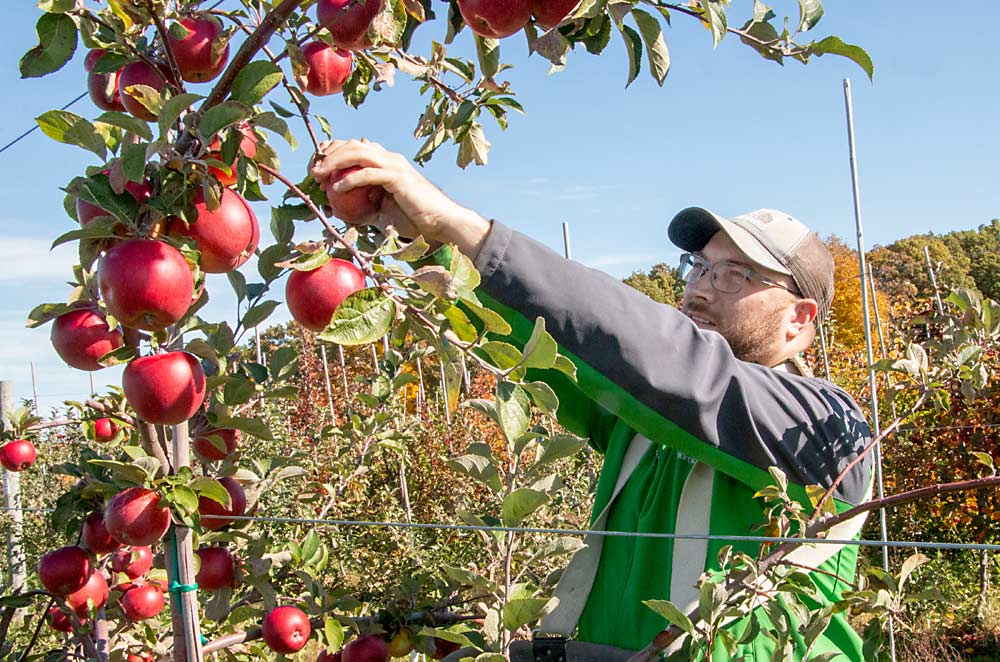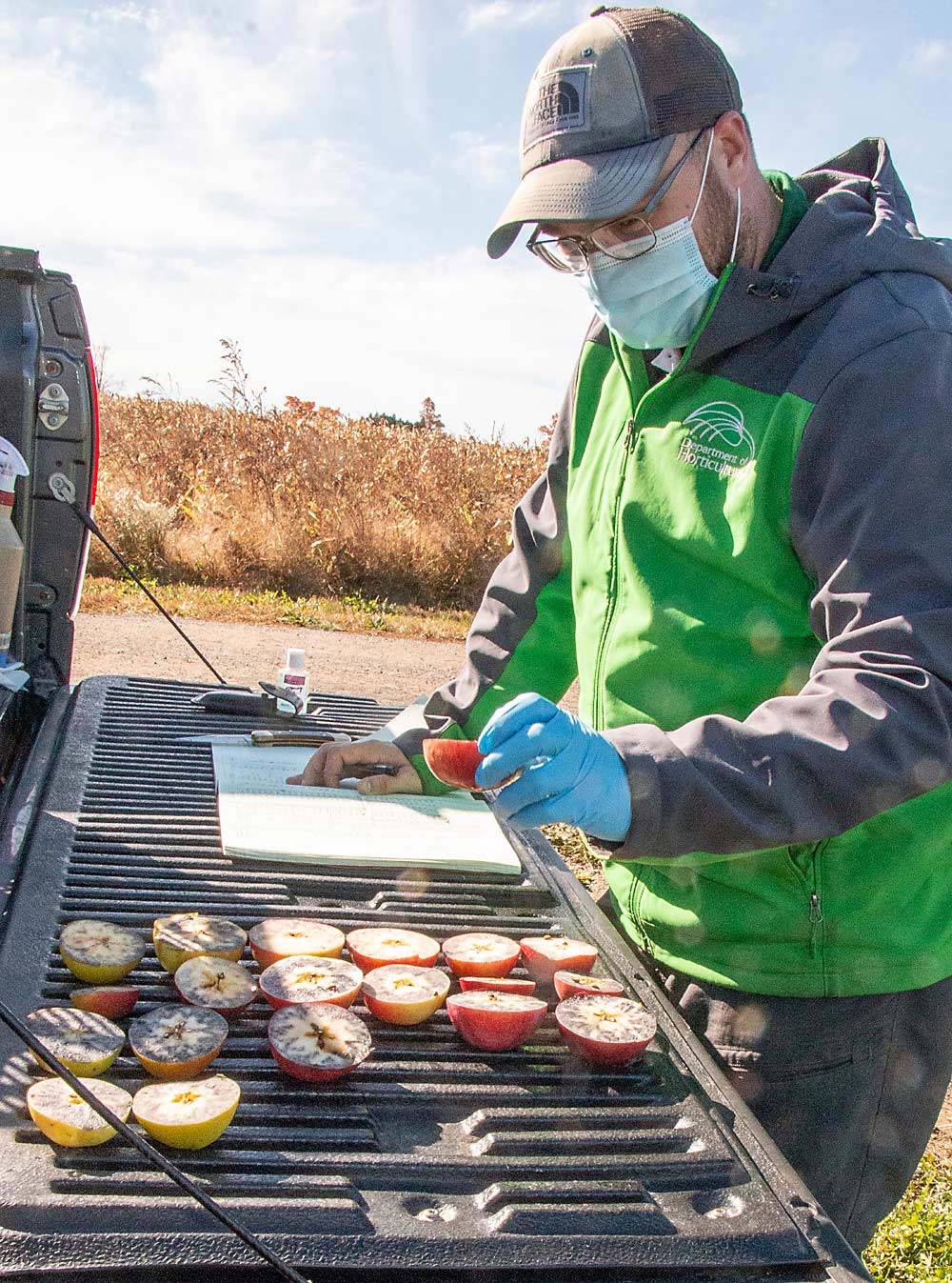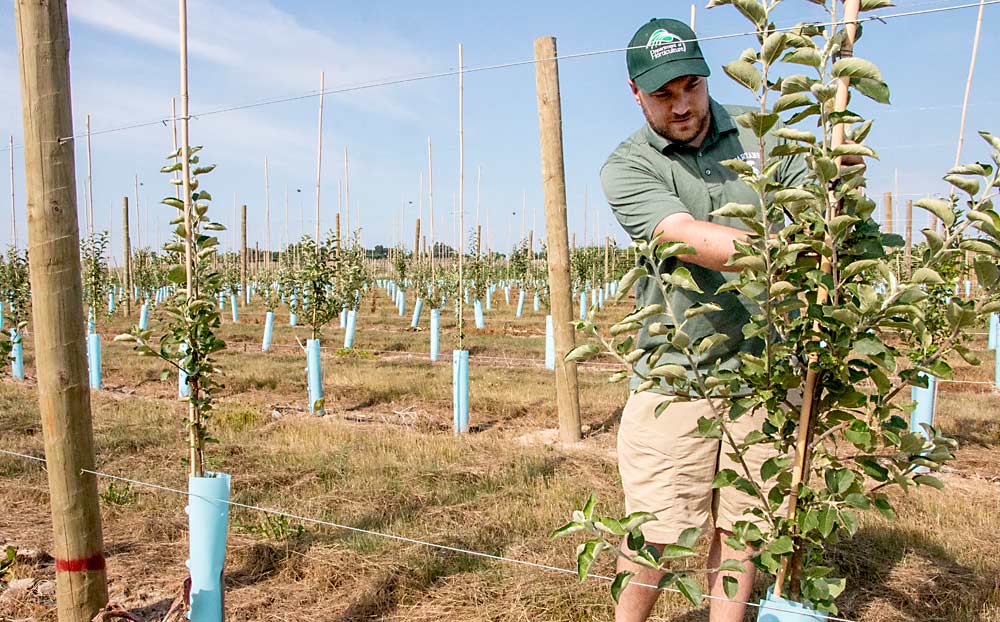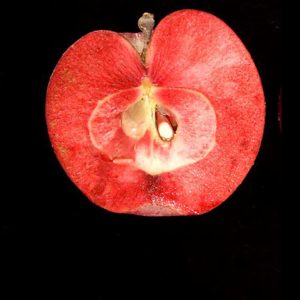
Michigan’s hard cider industry has been growing rapidly, now filling up a significant portion of the state’s craft beverage sector. If there’s a factor limiting industry growth, however, it’s a scarcity of specialized cider apples, said Steve van Nocker, a Michigan State University professor of horticulture.
Cider varieties, which differ from culinary apples by containing very high levels of sugars, acids and tannins, provide the complex flavors cidermakers want. Most of these hard cider cultivars originated in Great Britain and Western Europe, and they are not known to grow well in Michigan conditions. But with growing demand from consumers and cidermakers, growers need to know which cider cultivars will thrive in their environment, van Nocker said.
To find those ideal apples, van Nocker and MSU graduate research assistant Chris Gottschalk established the Great Lakes Cider Apple Collection at MSU’s Clarksville Research Center in 2016. With help from a Michigan State Horticultural Society grant, they planted 10 trees each of 15 cultivars, mostly traditional European cider varieties. The Clarksville trees were planted as 1-year-old grafts on M.9 rootstock, with most of the scion wood coming from the U.S. Department of Agriculture’s Malus germplasm collection in Geneva, New York.
A 2018 grant from the Michigan Department of Agriculture and Rural Development allowed them to plant more than 60 additional cultivars the following year. After a final planting in spring 2020, the collection now contains 88 unique cultivars, said Gottschalk, who’s pursuing a doctorate in horticulture, plant breeding and genetics.
Van Nocker also leads the Michigan PureRed Breeding Project, a trial of red-juice apple varieties — some of which have hard cider potential — located right next to the cider block at the research center.
Gottschalk manages the Great Lakes cider block at Clarksville. He said the varieties planted in 2016 — such as Esopus Spitzenburg and Roxbury Russet — are starting to produce fruit, but he expects most of the trees to come online by 2021.
The goal of the collection is to identify a core set of 10 to 20 cider varieties that perform exceptionally well in Michigan conditions. Exceptional performance involves many factors, but productive, disease-resistant varieties with high tannin levels that avoid biennial bearing would certainly fit the bill, Gottschalk said.

Spreading them out
Great Lakes Cider Apple Collection plantings spread beyond Clarksville in 2019, with dozens of cultivars now replicated at four commercial orchards across Michigan. The cooperating growers use their own preferred training systems, with varying densities. Gottschalk said growers fall into two general camps when it comes to cider apple production. Some, considering cider apples a processing crop that won’t fetch premium prices, grow them in low-input, low-density systems to keep costs down. Others grow them in more modern high-density systems, seeking the benefits of greater efficiency.
The Clarksville plantings lean more toward high density, but even with posts and wires in a vertical axis training system, there’s still about 5 feet between trees, he said.
“We wanted to space them out so we can see the tree architecture,” Gottschalk said.
Spreading the plantings across the state will help parse out regional differences. A variety that grows well in Clarksville, near the middle of the Lower Peninsula, for example, might not grow as well in Lake Leelanau, in that peninsula’s northwest corner — or vice versa. Those differences could extend beyond Michigan to other regions around the Great Lakes, Gottschalk said.
“New York and Michigan, in a lot of ways, are always looking at each other,” said Greg Peck, an assistant professor at Cornell University who manages his own hard cider variety trials in New York state. “Their climates are similar, but not exactly the same.”
Data generated by the Great Lakes Cider Apple Collection will be a great help to growers, not only in Michigan but the Northeast, Peck said.

In St. Johns, Michigan, near the center of the Lower Peninsula, grower and cidermaker Mike Beck planted about 10 varieties from the Great Lakes collection, including Dabinett and a couple of red-flesh apples. He planted them on M.106 rootstock at a 12- by 20-foot spacing. He plans to shake them, as is common in Europe, when they’re ready to bear fruit, he said.
Far to the northwest in Lake Leelanau, grower Kevin VerSnyder planted about 60 varieties — 10 trees of each. He was already growing about 1,800 cider-specific trees before Gottschalk sought him out. He planted the new trees on Bud.9 rootstock, about a foot apart.
“I wanted to learn more about what else was out there,” VerSnyder said. “Maybe find some hidden gems.”
One region that particularly intrigued Gottschalk was even further north, in Michigan’s Upper Peninsula — large, lightly populated and known for long, cold winters that aren’t hospitable to growing fruit.
“There’s not a lot of agricultural land there that’s being used,” he said. “The opportunity seems endless.”
Gottschalk found a small Upper Peninsula winery that agreed to plant a few dozen cultivars on M.7 rootstock in spring 2019.
Jim and Robin Barker, who own the End of the Road Winery in Germfask, already make hard ciders, but they buy the apples from other sources. The only wine grapes they can grow are cold-hardy hybrids, and even those are a struggle. But the Barkers think it’s possible to grow cider apples in their area, since they have some old McIntosh trees on their property, and they decided to give it a shot.
The first winter brought the first test, and the results were not encouraging. Snow and frozen rain crushed most of the young cider apple trees. About 80 percent were damaged beyond repair, Jim Barker said.
But to Gottschalk, even a negative result is a result. He decided it’s best not to plant 1-year-old grafts that far north. Three- or 4-year-old trees are more likely to stay above the snow line. As time goes by, results might show that cider varieties can’t succeed in the Upper Peninsula, but one bad winter won’t determine that.
“If we find even five varieties that produce fruit, that’s a win,” he said.
The Barkers planted more trees from the cider collection in July 2020. Along with Gottschalk, they’re waiting to see if the new trees will survive the coming winter.
“I don’t know much about these apples, but I hope in the next several years to learn more,” Jim Barker said.
—by Matt Milkovich







Leave A Comment